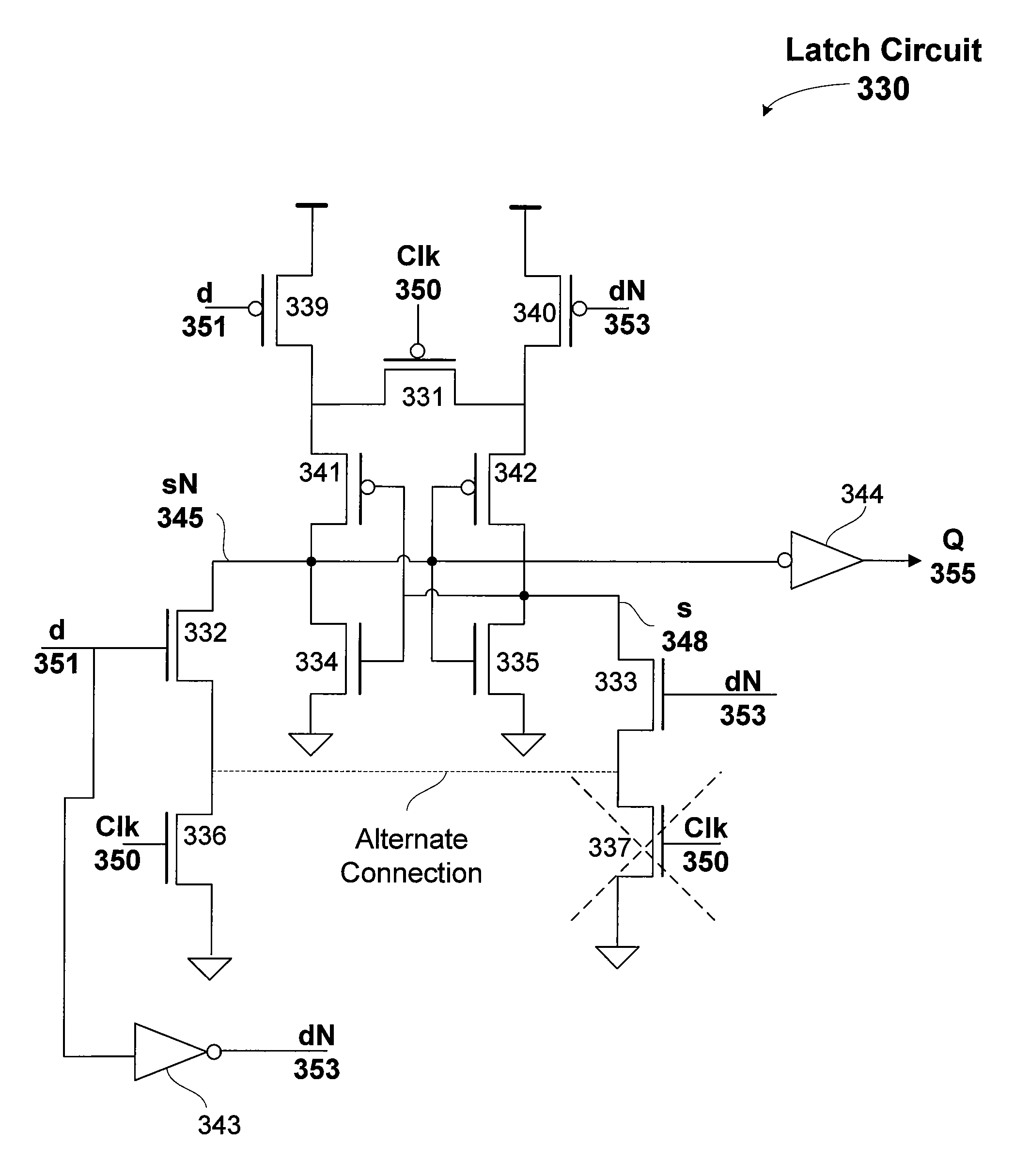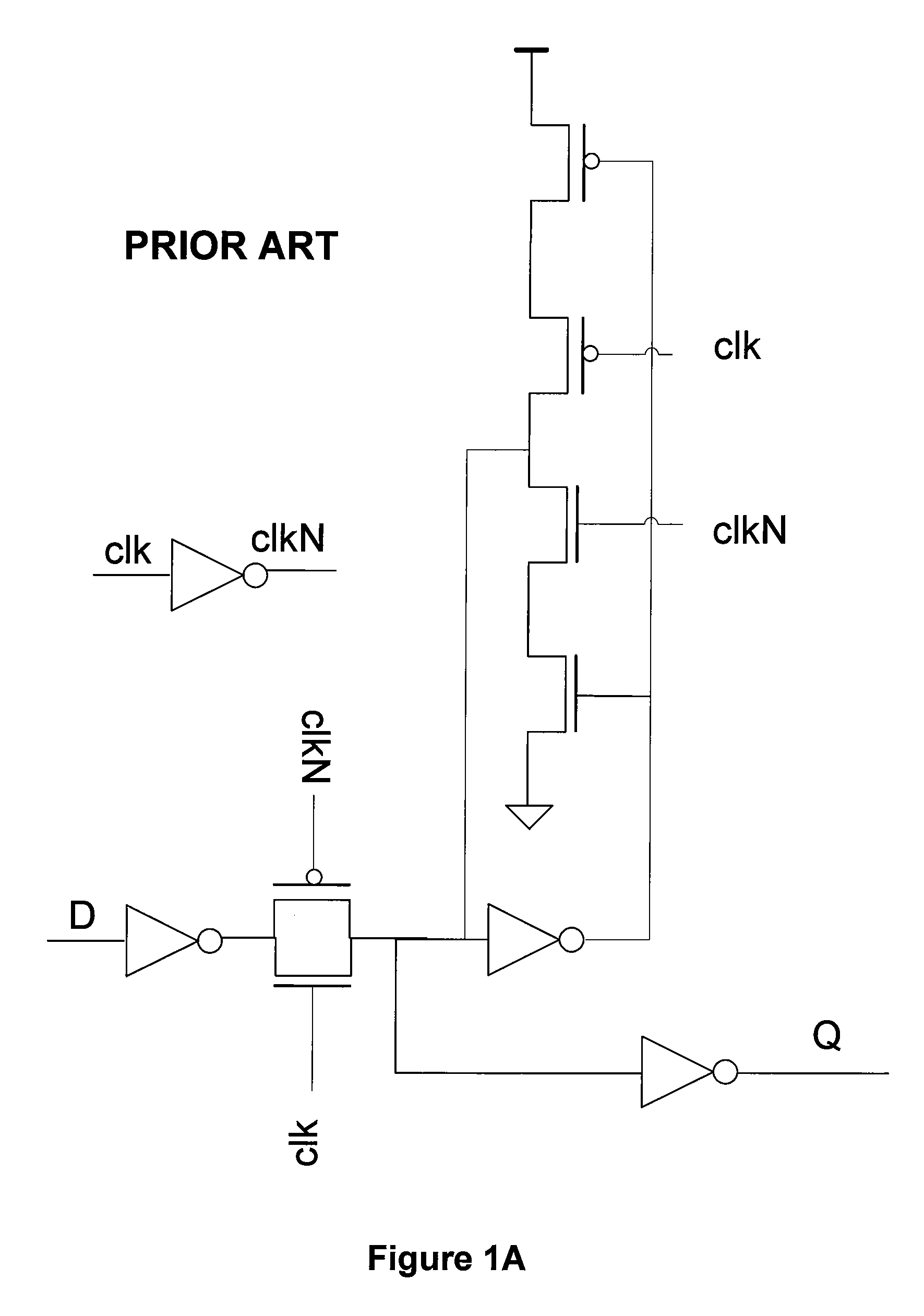Latch circuit with a bridging device
a latch circuit and bridging device technology, applied in the direction of pulse generators, pulse techniques, electrical apparatus, etc., can solve the problems of large power consumption in the clock network, significant power dissipation, and limited performance of integrated circuit devices, so as to reduce clock energy, reduce load, and improve latch circuit operation.
- Summary
- Abstract
- Description
- Claims
- Application Information
AI Technical Summary
Benefits of technology
Problems solved by technology
Method used
Image
Examples
Embodiment Construction
[0027]In the following description, numerous specific details are set forth to provide a more thorough understanding of the present invention. However, it will be apparent to one of skill in the art that the present invention may be practiced without one or more of these specific details. In other instances, well-known features have not been described in order to avoid obscuring the present invention.
[0028]FIG. 3A illustrates a low-clock-energy latch circuit 300 that is transparent when the clock signal, Clk 320 is low, according to one embodiment of the invention. The latch circuit 300 is a fully-static, clock-energy-efficient latch that presents only three loads to the clock and which does not depend on transistor device size ratios. With only three minimum sized clock loads, the latch circuit 300 should consume only a third of the clock energy that is consumed by a conventional pass-gate latch (dependent on transistor sizing). The total number of transistors included in the latch...
PUM
 Login to View More
Login to View More Abstract
Description
Claims
Application Information
 Login to View More
Login to View More - R&D
- Intellectual Property
- Life Sciences
- Materials
- Tech Scout
- Unparalleled Data Quality
- Higher Quality Content
- 60% Fewer Hallucinations
Browse by: Latest US Patents, China's latest patents, Technical Efficacy Thesaurus, Application Domain, Technology Topic, Popular Technical Reports.
© 2025 PatSnap. All rights reserved.Legal|Privacy policy|Modern Slavery Act Transparency Statement|Sitemap|About US| Contact US: help@patsnap.com



